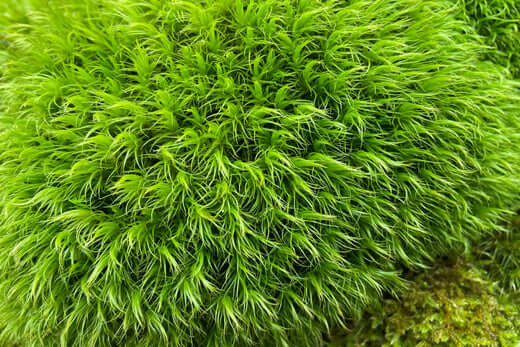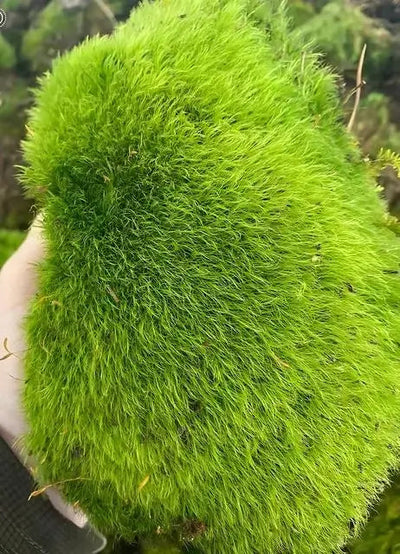Broom Forkmoss value lies in its beauty, versatility, and power to make a lush, green backdrop in various natural landscapes. Broom Forkmoss thrives in environments that allow it to spread low across the ground, creating a soft, dense layer of greenery. Still, it should be admired for its aesthetic contributions rather than its utility as a food source. However, as with any plant, it's always wise to handle it carefully and appreciate it for what it offers-stunning ground coverage that enhances the natural environment.
What is the use of broom forkmoss?
Broom Forkmoss, scientifically known as Dicranum scoparium, is treasured primarily for its environmental and aesthetic qualities. It forms dense mats of bright green, threadlike stems, providing natural erosion control on sloping terrain. Broom Forkmoss is particularly beneficial for creating a ground layer that can outcompete weeds and serve as a visually appealing green carpet in woodland gardens and areas with shady environments.
This moss is often used in traditional Japanese gardens and other naturalistic landscape designs. Its ability to thrive in shady, damp areas makes it ideal for areas under trees or in rock gardens where other plants struggle. Beyond its visual appeal, it's valued for contributing to the microhabitats of a garden, offering refuge and moisture retention for small insects and aiding in overall ecosystem balance. Broom Forkmoss is also commonly featured in terrariums due to its low-maintenance care needs and ability to thrive indoors, making it a favorite among moss enthusiasts and terrarium creators.
Additionally, mosses like Broom Forkmoss can absorb airborne pollutants, improving air quality around their spaces. This makes them eco-friendly for gardeners who prioritize sustainability and environmental consciousness. Their ability to filter and retain water is beneficial in landscapes that experience frequent rainfall or in areas prone to erosion. By maintaining moisture levels in the soil, Broom Forkmoss supports surrounding plant life and encourages biodiversity, making it functional and essential for a healthy garden ecosystem.
How do you take care of a Broom Forkmoss?
Taking care of Broom Forkmoss is simple, making it a favored option for gardeners seeking a low-maintenance plant. This moss thrives in humid and shaded environments, so the key to its care lies in mimicking the conditions of a moist forest floor. Broom Forkmoss appreciates consistent moisture and will flourish if watered regularly, especially during dry spells. However, it does not tolerate standing water, so ensure the soil or substrate is well-draining to avoid waterlogging. Maintaining the right balance between moisture and drainage is crucial for its long-term health.
Since Broom Forkmoss thrives in shady conditions, direct sunlight can cause it to dry out or even become scorched. Place it in a spot with filtered light or deep shade for best results, mainly if it's part of an outdoor garden or terrarium. Indoors, it does well with indirect sunlight, making it an ideal choice for north-facing windowsills or shaded corners of the home.

If growing in a garden, adding a thin layer of organic compost around the moss can help retain moisture and promote healthy growth. This will also give it the nutrients it needs, as mosses do not derive their sustenance from the soil like traditional plants. Instead, they absorb moisture and nutrients from the air and their immediate surroundings.
Pruning or trimming Broom Forkmoss is unnecessary, but you can gently thin it out by hand if it becomes too dense or outgrows its intended space. This moss is a hardy and resilient plant requiring minimal upkeep beyond ensuring the right environment. Its ability to thrive in low-light and moist conditions will reward you with lush, green carpets for years to come with minimal effort.
Where does broom moss grow?
Broom Forkmoss is native to temperate regions worldwide and commonly found in forests, streambanks, and damp, shaded areas. It flourishes in regions with high humidity and consistent moisture, often appearing as a thick green blanket covering soil, rocks, and decaying logs in the forest understory. Its natural habitats include North America, Europe, and parts of Asia, where it plays a crucial role in forest ecosystems by aiding in moisture retention and providing a habitat for small wildlife and microorganisms.
Broom Forkmoss thrives in acidic soil conditions and is often found in coniferous forests where fallen needles contribute to acidity. It grows best in areas with limited sunlight, as direct exposure can cause the moss to dry out quickly. Instead, it prefers the dappled light that filters through tree canopies, ensuring the surrounding environment stays cool and moist. This makes it an excellent choice for gardeners looking to add greenery to the shady corners of their outdoor spaces.
Broom Forkmoss is often used as a ground cover in rock gardens, woodland settings, or alongside water features like ponds and streams. Its power to stick to rocks and other surfaces makes it an excellent plant for adding texture to garden walls or stone pathways, where its bright green foliage can create a serene, natural feel. Additionally, it can be grown indoors, particularly in terrariums or shaded window boxes, where it mimics its natural woodland environment and provides a lush, low-maintenance option for indoor greenery.
In conclusion, Broom Forkmoss offers a versatile and low-maintenance solution for gardeners looking to enhance their landscapes with natural greenery. Whether used for ground cover, erosion control, or simply for its aesthetic appeal, this resilient moss is an ideal option for creating a tranquil and eco-friendly garden space. This moss will thrive by providing the right conditions, moisture, shade, and proper drainage, turning even the darkest corners of your garden into lush, green oases.


